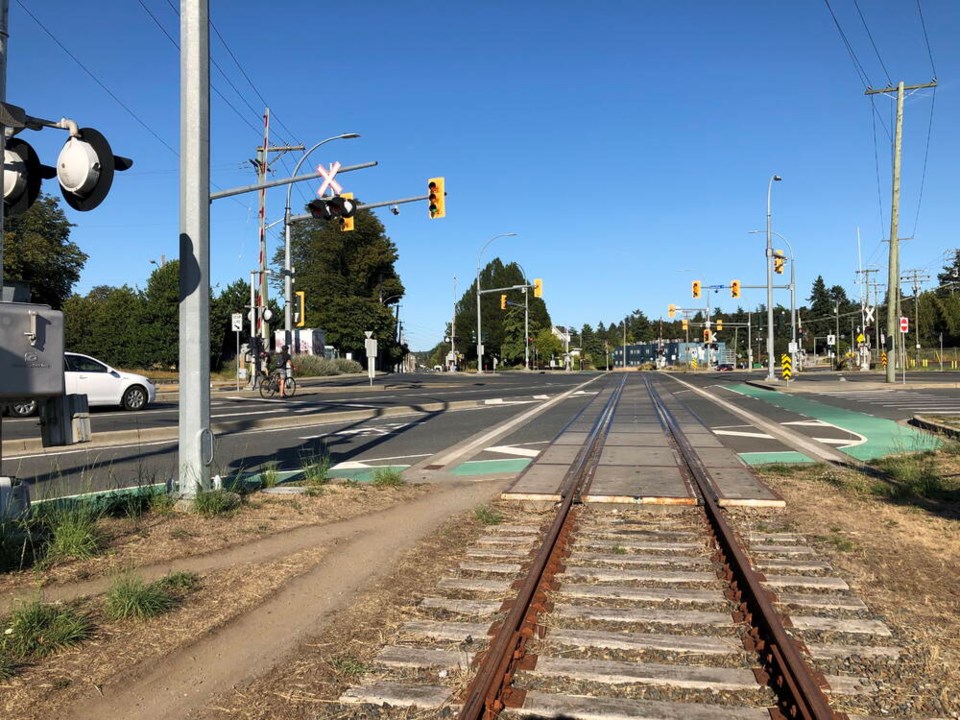A commentary by a former senior transit planner for B.C. Transit and a real-estate developer in Victoria.
The debate continues to rage about whether we should secure the Island Rail Corridor for future generations.
While the Capital Regional District, our local municipalities and many island First Nations have endorsed the move, the provincial and federal governments dither. All the while, the time is marching on towards March 2023, when the opportunity will be lost forever if no action is taken.
I cannot help but see a parallel to the story of the streetcars that used to service Victoria and Vancouver until the 1940s. At that time, powered by dollars from big oil and automotive interests, streetcar lines across North America were ripped up and the infrastructure removed to make way for buses built by the big three automakers and powered by gasoline.
The collusion of major corporate interests to remove these lines is well-documented and worth looking into, as it had a profound impact on the way North American cities have grown and changed following the Second World War.
Many city planners (myself included) look back and lament the loss of this urban transit infrastructure and desperately wish we still had it today.
In cities across Canada, councils and planners expend significant resources to motivate residents out of their private vehicles and onto transit as we grapple with the daunting reality of climate change and the recognition that the status quo is not meeting the challenges we face.
The goal is a balanced and resilient transportation system, with options and redundancy: A system that enables a low-car or no-car lifestyle and can compete against the convenience of the private automobile, all while keeping our environmental impact in check.
With the knowledge that losing transit infrastructure in our cities was a major setback with significant environmental impacts, I’m dumbfounded as to how we are even debating whether to preserve the E&N rail corridor.
The costs of reinstating this corridor have been cited as one reason not to do so. But I beg the question: What is the cost of not securing the corridor?
A continuation of the status quo has already been deemed inappropriate and we hear the calls to act on climate change daily. The extreme weather we have faced over the past two years and the supply chain impacts of COVID have highlighted our precarious situation on the south Island.
Do we really want to continue to rely on a single road to connect the CRD to the rest of the island? Do we not want a rail link from our fastest growing municipalities to our urban core where employment is concentrated?
I suppose the provincial government feels the Colwood Crawl is an acceptable outcome for those families searching for housing affordability by considering moving to Langford or Colwood.
Our population is exploding on the south Island and the province has experienced its largest growth spurt in more than 50 years. A recent National Post survey indicated that B.C. is Canada’s favourite province, suggesting the trend is not going to change.
Our south Island cities are struggling to accommodate the growth pressure and the costs of living are increasing rapidly. Now is the time to secure this corridor and plan for a more sustainable future; a future that is balanced and resilient and not wed to a single transportation solution.
We should learn from the mistakes of our past and make the investment required to preserve this corridor for future generations. To lose the corridor is poor planning and a cementing of the status quo into the future.
Let’s not look back 50 years from now and realize we’ve made another mistake.
Perhaps with the billion dollars the provincial government has saved by not building a museum that no one was asking for, we can take a look at investing in transit infrastructure somewhere outside of the Lower Mainland.
>>> To comment on this article, write a letter to the editor: [email protected]



